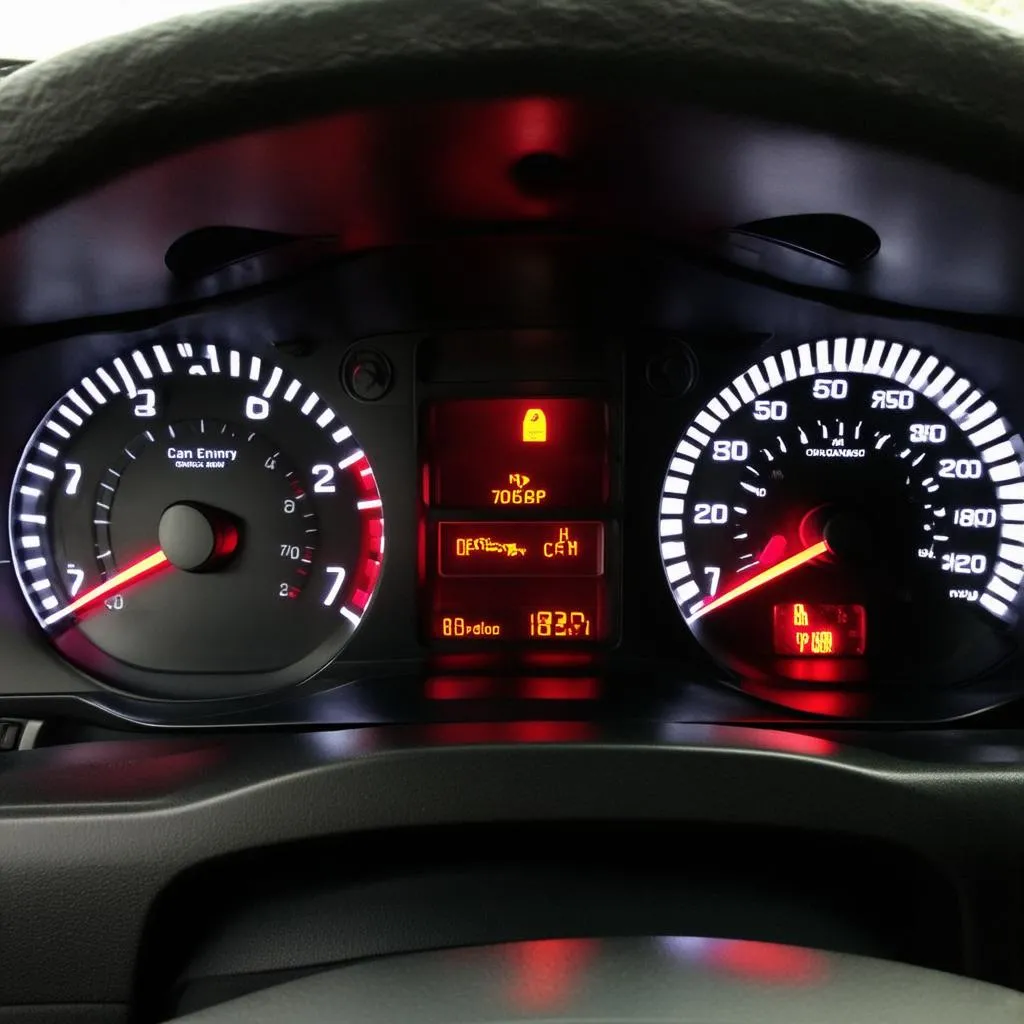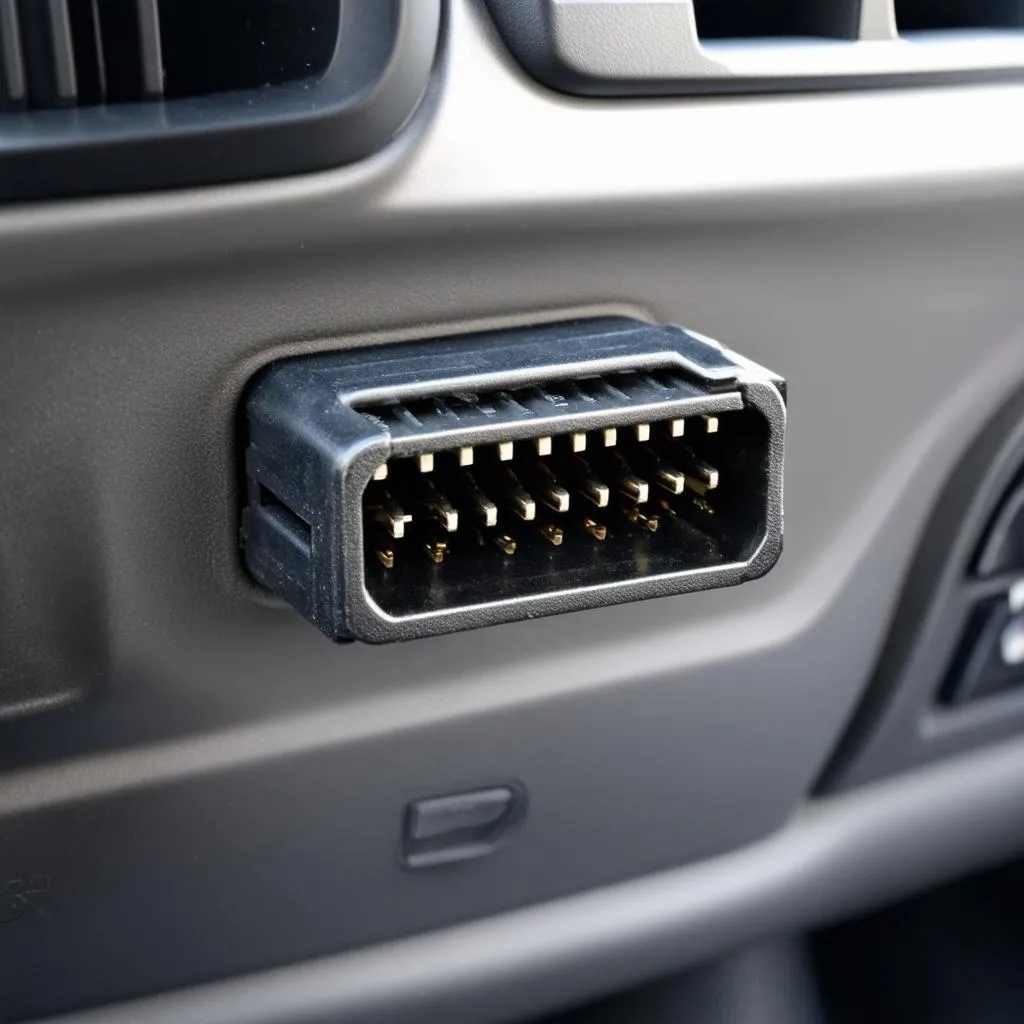Have you ever been driving your beloved 1998 Toyota Camry, only to be greeted by the dreaded check engine light? It’s a feeling that can strike fear into the heart of any car owner, especially if you’re not sure what’s going on. Don’t worry, you’re not alone! Many people experience this, and it’s often a simple fix.
In this article, we’ll delve into the world of OBD codes for your 1998 Toyota Camry, helping you understand what those cryptic codes mean and how to troubleshoot them. Think of it as a guide to understanding your car’s language.
Understanding OBD Codes: Unlocking Your Car’s Secrets
OBD stands for On-Board Diagnostics, a system that monitors your car’s performance and reports any issues to the driver. When a problem arises, the system will store a diagnostic trouble code, or DTC, which is a unique code representing the problem. This information is crucial for identifying and fixing the issue, but deciphering the codes can be daunting.
The Significance of OBD Codes
OBD codes are essentially your car’s way of communicating with you. They provide valuable insights into the health of your vehicle, helping you:
- Identify potential problems early on: Detecting a problem early can prevent it from escalating into a major repair.
- Save money: By understanding the issue, you can make informed decisions about repairs, potentially avoiding unnecessary work.
- Ensure safe driving: A malfunctioning car can be dangerous, so identifying and addressing issues promptly is crucial for safety.
1998 Toyota Camry Obd Codes: Common Issues and Solutions
Engine Misfire
Code: P0300 (Multiple Cylinder Misfire)
What it means: This code indicates that your car’s engine isn’t firing smoothly.
Possible causes:
- Spark plugs: Worn-out spark plugs are a common culprit.
- Spark plug wires: Damaged wires can hinder the spark reaching the plugs.
- Fuel injectors: Clogged or malfunctioning injectors can prevent proper fuel delivery.
- Ignition coil: A faulty ignition coil can fail to deliver a strong spark.
- Engine sensors: Faulty sensors can provide inaccurate information to the engine control unit (ECU).
Solution:
- Replace worn-out spark plugs and wires.
- Inspect fuel injectors and clean them if necessary.
- Check for a faulty ignition coil.
- Inspect and replace any damaged sensors.
Oxygen Sensor Failure
Code: P0135 (Oxygen Sensor Heater Circuit Malfunction Bank 1 Sensor 1)
What it means: Your car’s oxygen sensors monitor the exhaust gases and provide feedback to the ECU to ensure optimal fuel efficiency and emissions. A faulty oxygen sensor can lead to increased fuel consumption and poor performance.
Possible causes:
- Worn-out oxygen sensor: Sensors wear out over time.
- Damaged wiring: Damaged wiring can prevent proper communication.
- Faulty ECU: The ECU can malfunction, causing inaccurate readings from the sensor.
Solution:
- Replace the faulty oxygen sensor.
- Inspect and repair any damaged wiring.
- Consult a mechanic if you suspect a faulty ECU.
Catalytic Converter Issues
Code: P0420 (Catalyst System Efficiency Below Threshold Bank 1)
What it means: Your catalytic converter is responsible for reducing harmful emissions from your engine’s exhaust. This code indicates that the converter isn’t functioning properly.
Possible causes:
- Worn-out catalytic converter: Catalytic converters have a limited lifespan.
- Engine misfire: An engine misfire can damage the converter.
- Faulty oxygen sensors: Faulty sensors can provide inaccurate data to the ECU, leading to misinterpretations.
Solution:
- Inspect the catalytic converter for damage and replace it if necessary.
- Address any underlying engine misfires.
- Replace faulty oxygen sensors.
Additional Considerations
- Environmental Factors: Extreme temperatures, humidity, and pollution can affect OBD codes and engine performance.
- Fuel Quality: Using low-quality fuel can contribute to engine problems and trigger OBD codes.
- Vehicle History: Understanding the vehicle’s maintenance history can help pinpoint potential issues.
Common User Queries
Here are some frequently asked questions about 1998 Toyota Camry Obd Codes:
- “Where’s the OBD port on my 1998 Camry?” [Link to https://techcarusa.com/98-camry-obd-port-location/] The OBD port is located under the dashboard, near the steering column.
- “Can I reset the check engine light myself?” You can try resetting the light by disconnecting the battery for a few minutes, but if the code returns, there’s an underlying issue that needs to be addressed.
- “What’s the best way to interpret OBD codes?” Using a code reader or scanner specifically designed for Toyota vehicles can provide more detailed information and help you troubleshoot the problem.
Conclusion
OBD codes can be a source of frustration, but they’re a valuable tool for understanding your car’s health. By understanding the codes and their potential causes, you can identify and address issues early, preventing them from escalating into major problems. Remember, preventive maintenance and regular inspections can help keep your 1998 Toyota Camry running smoothly for years to come.
 1998 Toyota Camry Dashboard with Check Engine Light
1998 Toyota Camry Dashboard with Check Engine Light
 1998 Toyota Camry OBD Port
1998 Toyota Camry OBD Port
If you’re experiencing issues with your 1998 Toyota Camry, or you have any questions about OBD codes, don’t hesitate to reach out to our team of experts. We’re available 24/7 to provide you with the support and guidance you need.
Contact us via Whatsapp: +84767531508